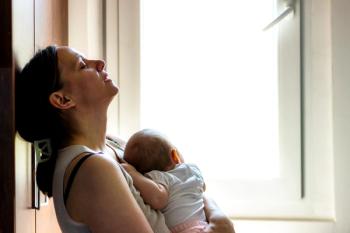
Invisible Ranks: The Untold Battle for Women Veterans’ Mental Health
Key Takeaways
- Women veterans face unique challenges, including higher rates of trauma and mental health issues like PTSD and depression, compared to male veterans and civilian women.
- Military sexual trauma (MST) is prevalent among women veterans, contributing significantly to mental health challenges and requiring urgent attention.
Women veterans face unique challenges and mental health disparities, highlighting the urgent need for gender-sensitive care and support systems.
AAPAL
Women veterans remain a minority within the military, yet they represent the fastest-growing segment of the veteran population, and one of the most diverse, racially and culturally. They are projected to make up about 18% of the veteran population by 2040.1 Despite this growth, their experiences are often misunderstood or overlooked. This lack of attention has real consequences, as women veterans face a set of challenges that differ both from those of male veterans and from civilian women.2
Historically, women have been excluded from certain military roles and often encounter various forms of marginalization while serving. This can deeply affect their sense of belonging and identity within the armed forces.3 Additionally, many women enter military service already carrying the weight of past trauma, sometimes joining to escape unsafe or unstable environments. Studies suggest that between 81% and 93% of women veterans have experienced at least 1 traumatic event in their lifetime, a number that is too often overlooked when discussing their mental health needs.4
Disparities
Women veterans had double the lifetime prevalence of posttraumatic stress disorder (PTSD) compared with their male counterparts.5 It is important to note that sexual trauma is linked to PTSD symptoms at rates equal to or higher than those seen after combat exposure.6 A meta-analysis evaluating 69 studies shows that about 38% of women, compared with just 3.9% of men, report experiencing military sexual trauma (MST).7 This is reinforced by the Veterans Health Administration (VA) screening, wherein about 1 in 3 women report having experienced MST.2 These statistics highlight an urgent need to confront not just the visible wounds of service but also the invisible scars that shape women veterans’ post-military lives.
It is also important to consider the broader context in which MST occurs. Many survivors describe experiencing a sense of institutional betrayal—feeling let down by the very system that was supposed to protect them. In the military, where people live and work closely together and often rely on one another for safety and survival, experiencing MST can be especially devastating. Reports indicate that harassment or assault may feel common or likely to occur and reporting often seems unsafe or futile. Survivors frequently face ostracism from colleagues, isolation, and a loss of support, compounded by fears of retaliation, including violence, demotion, or unwanted job reassignments.8
The high prevalence of MST, combined with other psychosocial stressors, contributes to significant mental health challenges for female veterans.There is strong evidence that female veterans have significantly higher rates of depression compared with male veterans. For example, research on Iraq and Afghanistan veterans found that women veterans are more likely to be diagnosed with depression.9 A national VA study of over 5 million veterans reinforced this finding, showing that 28% of women veterans had a diagnosis of depression, compared with 16% of men—nearly double the rate.10
Female veterans have significantly increased rates of suicidal ideation compared with male veterans (18.1% compared with 11.2%).11 In addition, the rate of death due to suicide among female veterans is rising. Research shows that the drivers of suicidal thoughts differ between women and men, making it clear that one-size-fits-all care is not enough.11 We must prioritize mental health services that recognize and respond to the unique challenges female veterans face.
Gaps in Care
The VA is a capitated system, meaning that many of the economic and insurance barriers affecting access in other populations are less relevant. Nevertheless, gaps in help-seeking and satisfaction with care persist. One study found that about half of all women veterans in primary care reported needing access to mental health services. At first glance, access appears adequate, with approximately 84% of women in the same study receiving care. However, only about half of the more than 6000 women surveyed felt that the care they received met their needs.12 These gaps reflect broader systemic and cultural barriers. Research has highlighted stigma, limited accessibility, and gender-specific challenges as major obstacles to care for women veterans.13
Kimerling and colleagues observed that many women sought care outside the VA, often due to the absence of women-specific treatment settings or same-gender therapy groups.12 Women have reported that when discussing MST, providers were usually unable to understand their experiences, and group therapy sessions primarily focused on combat trauma, which was not relatable for many participants.1 About 1 in 5 women reported feeling uncomfortable or out of place in their mental health treatment environment,12 and roughly 1 in 4 experienced inappropriate or unwanted comments or behavior from male veterans at VA medical care facilities,14 further discouraging engagement with services. It is especially concerning that such experiences occur in spaces meant for healing, effectively re-exposing women veterans (many already affected by MST) to the very dynamics they sought to escape.
In addition to structural barriers, stigma and fear of being perceived as weak continue to hinder women veterans from seeking mental health care. Fitzke noted that while this concern was somewhat less pronounced than among men, the culture of military masculinity still influenced women’s experiences. Many reported feeling scrutinized or judged in VA health care settings, with some describing the sense that “as a female, you don’t belong here.” These attitudes minimized their service, questioned their contributions on the front lines, and created an environment where women veterans felt their experiences (both in combat and in trauma) were dismissed or undervalued.1
How to Bridge the Gaps
To address gender specific challenges, increased sensitivity to patient preferences and willingness to accommodate those preferences has been shown to be helpful. As an example, research has found that on average only 41% of women veterans who received any psychotherapy made it to 8 sessions, less than half. However, that same research has found that meeting patient’s care preferences, such as wanting to have a same gender provider, wanting access to women specific clinics, group vs one on one therapy, was associated with greater treatment adherence. Each preference met was associated with greater retention, with more preferences met conferring significantly greater effects.15 Other research supports this idea, finding that gender-specific care was associated with twice the odds of reporting that care need was met and increased compliance.13 The VA and other systems that treat veterans must make efforts to be sensitive to patient preferences for how they wish to receive care as that can play a significant role in increasing retention and effectiveness.
A large-scale VA study on women veterans found that current efforts by the VA to reduce stigma and help women veterans feel respected have been successful, with the percentage of respondents that felt respected by their primary care provider, specialist provider, and nursing/office staff all increasing from 2014 to 2023. However, they also found some areas that could be improved. One area of straightforward improvement that could be done to make mental health care more acceptable would be to refine waiting rooms. Only 54% of women in the study felt that check in areas had sufficient privacy, and only 63% felt the waiting room was welcoming. Feeling the waiting room was welcoming specifically was one of the strongest correlates with women feeling safe in the VA. Increasing the privacy of the waiting and check in area with discrete barriers such as plants may be an easy way of increasing feelings of overall safety.16
One promising option to address logistical barriers is primary and mental health integration (PHI). Research has found that integrated primary and mental health care was associated with a 3-fold increase in subsequent mental health evaluation in women, and this association was not seen in men.13 It has been suggested that having all their care in one place makes accessing care easier for women, as it simplifies their logistical burden. This is supported by Leung et al finding increased PHI penetration at primary care was associated with increased primary care visits for women and decreased hospitalizations for women.10 Overall, PHI is a promising care model to help us meet women veterans and give them the care they deserve.
Concluding Thoughts
Women veterans are a growing and diverse segment of the military population, yet their unique experiences are too often overlooked. This population carries high rates of trauma and mental health challenges, both from experiences before military service and from the unique stressors they face during duty. Even when women veterans access care, systemic barriers and limitations often prevent it from meeting their specific needs. Evidence shows that a gender-sensitive, integrated, and responsive approach that honors women’s preferences and experiences significantly improve engagement and outcomes. Addressing these gaps is not simply a matter of providing care; it is about building systems that truly understand, support, and respect the women who have served. Ensuring effective care for women veterans is critical to honoring their service and the sacrifices they have made.
Dr Villanueva is an associate professor in the department of psychiatry and behavioral sciences at Wake Forest University School of Medicine. Dr Wan is a PGY-2 psychiatry resident at Atrium Health. Dr Gonzales-Cabrales is a PGY-2 psychiatry resident at Atrium Health.
References
1. Fitzke RE, Bouskill KE, Sedano A, et al.
2. Schultz D, Hunter KM, Skrabala L, Haynie JG.
3. Alpert E, Baier AL, Galovski TE.
4. Zinzow HM, Grubaugh AL, Monnier J, et al.
5. Lehavot K, Katon JG, Chen JA, et al.
6. Kessler, R. C., Aguilar-Gaxiola, S., Alonso, J., et al.
7. Wilson LC.
8. Galovski TE, Street AE, Creech S, et al.
9. Maguen S, Ren L, Bosch JO, et al.
10. Leung LB, Rubenstein LV, Post EP, et al.
11. Stefanovics EA, Potenza MN, Tsai J, et al.
12. Kimerling R, Pavao J, Greene L, et al.
13. Godier-McBard LR, Wood A, Kohomange M, et al.
14. Klap R, Darling JE, Hamilton AB, et al.
15. Farmer CC, Rossi FS, Michael EM, Kimerling R.
16. Study of barriers for women Veterans to VA Health Care. Department of Veterans Affairs. February 2024. Accessed November 10, 2025.
Newsletter
Receive trusted psychiatric news, expert analysis, and clinical insights — subscribe today to support your practice and your patients.













